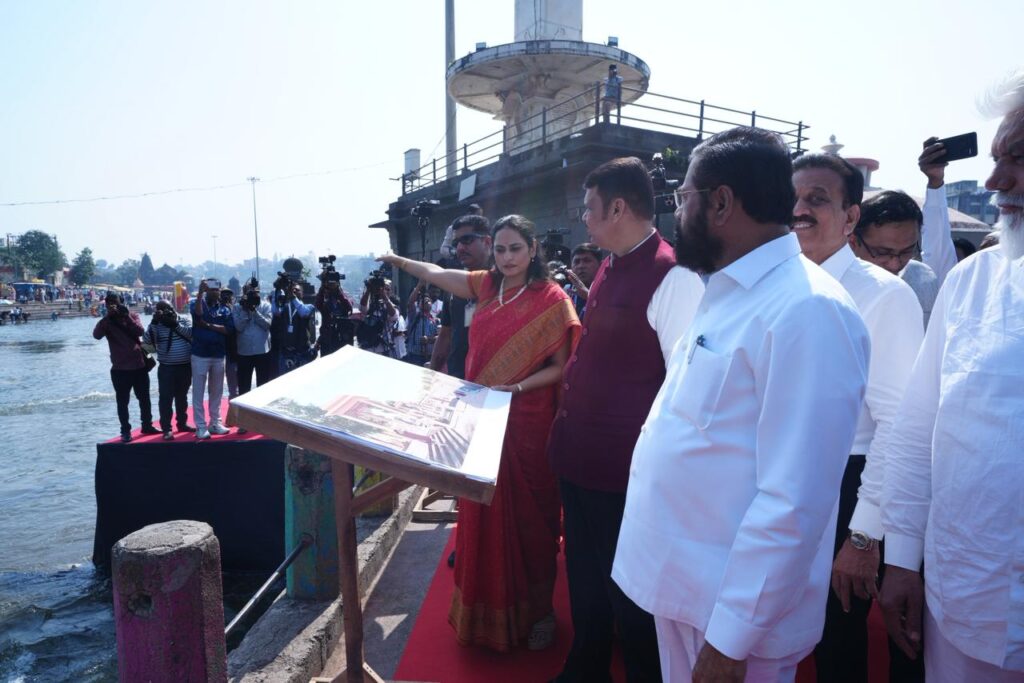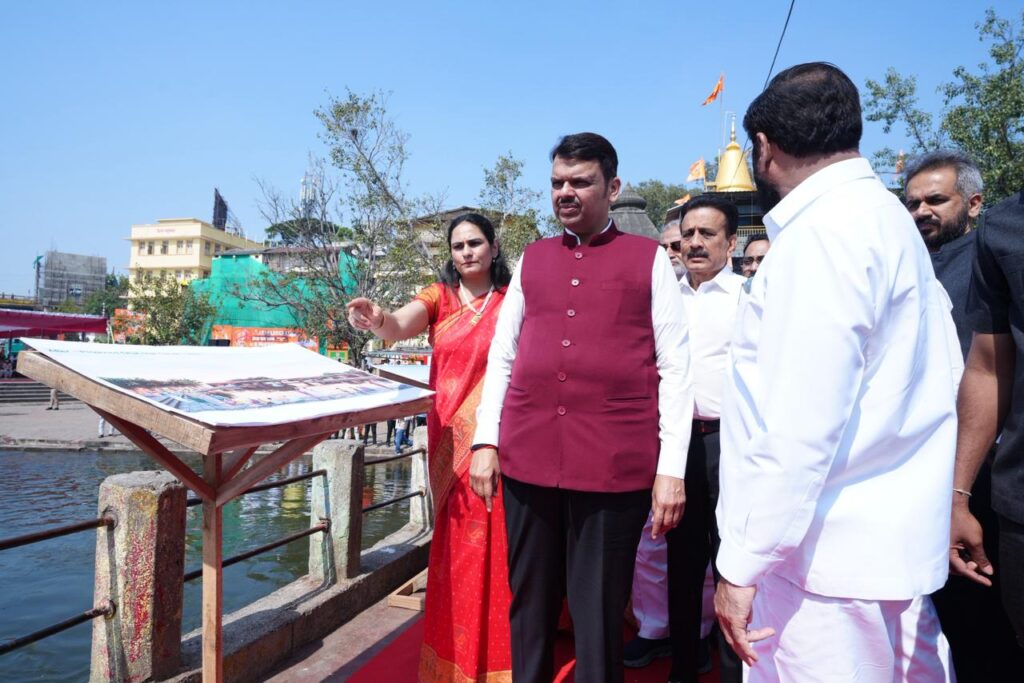Chief Minister Devendra Fadnavis inaugurated the ₹370 crore Vilholi Water Treatment Plant (WTP) and Mukane water supply augmentation scheme in Nashik on November 14, 2025, marking a significant milestone in the city’s water infrastructure development.
The 274 million litres daily capacity plant aims to provide reliable, safe, and sustainable water to over 55 lakh residents, while also catering to the needs of more than one crore visitors anticipated during the 2027 Simhastha Kumbh Mela.
This project aims to transform Nashik into a model smart and water-secure city by reducing Non-Revenue Water (NRW), water lost due to leakage or inefficiency, from 45% currently to 27%, and eventually to a targeted 5% through pipeline upgrades, improved distribution, and modern automated water management systems.
The initiative is expected to boost local employment as well as tourism-linked businesses, ensuring year-round water availability even during peak tourist seasons.

Strategic Step Towards a Smart Water-Secure City
Funded partially through ₹200 crore worth of Green Sustainable Bonds, the Vilholi WTP and Mukane augmentation project exemplify Nashik’s forward-thinking approach to sustainable urban infrastructure.
Nashik Municipal Corporation Commissioner Manisha Khatri emphasised, “Our goal is to reduce Non-Revenue Water from 45% to 27%, and eventually to 5%, through upgraded pipelines, improved distribution efficiency, and advanced SCADA automation. These efforts will ensure consistent, high-quality water supply and make Nashik a benchmark city in India’s urban water management.”
Chief Minister Fadnavis highlighted, “This project reflects our commitment to ensuring water security and sustainable growth for Nashik, benefitting citizens and supporting the city’s future development.”

Addressing Long-standing Urban Water Challenges
Nashik has long struggled with water supply challenges, including significant water losses due to aging infrastructure and leaks, which resulted in nearly half of its water being unaccounted for. The Vilholi WTP and related Mukane scheme represent vital steps to address these systemic inefficiencies.
This project is only part of a broader strategic effort supported by government programmes like AMRUT, involving pipeline replacement and sewage management upgrades funded through innovative mechanisms such as green bonds.
Additionally, Nashik Municipal Corporation is working on laying approximately 200 km of new sewerage pipelines and replacing outdated lines to further improve sanitation and urban water management ahead of the Kumbh Mela.

Parallel Urban Water Initiatives Across India
Similar to Nashik, other Indian cities are launching ambitious water infrastructure projects aimed at securing their water future. For instance, Greater Noida has embarked on an ecological restoration and water management programme that focuses on community stewardship and sustainable water use.
Many urban centres are adopting advanced automation and smart technologies in their water networks to reduce losses, enhance monitoring, and ensure equitable water distribution, lessons Nashik’s project effectively incorporates. Such initiatives demonstrate a growing national commitment to tackling urban water challenges through innovation, sustainability, and civic engagement.
The Logical Indian’s Perspective
Nashik’s investment in the Vilholi Water Treatment Plant and linked infrastructure exemplifies a progressive model of urban water management that balances sustainability, technological innovation, and social welfare. Reducing water loss and ensuring continuous supply are not only crucial for improving everyday life but are also essential preparations for hosting massive cultural events responsibly.
This project highlights the vital role government vision, effective administration, and sustainable financing play in future-proofing cities. It encourages other urban regions to replicate such forward-looking approaches, fostering resilience amid increasing population pressures and climate uncertainties.












